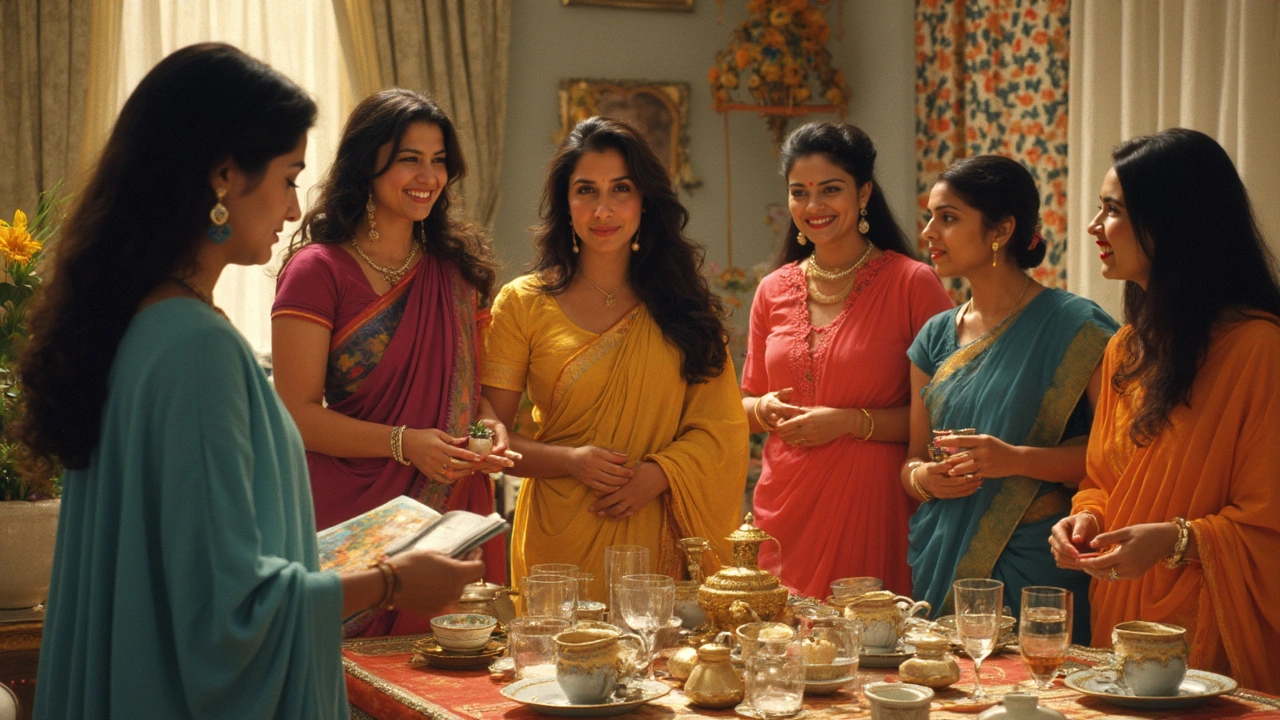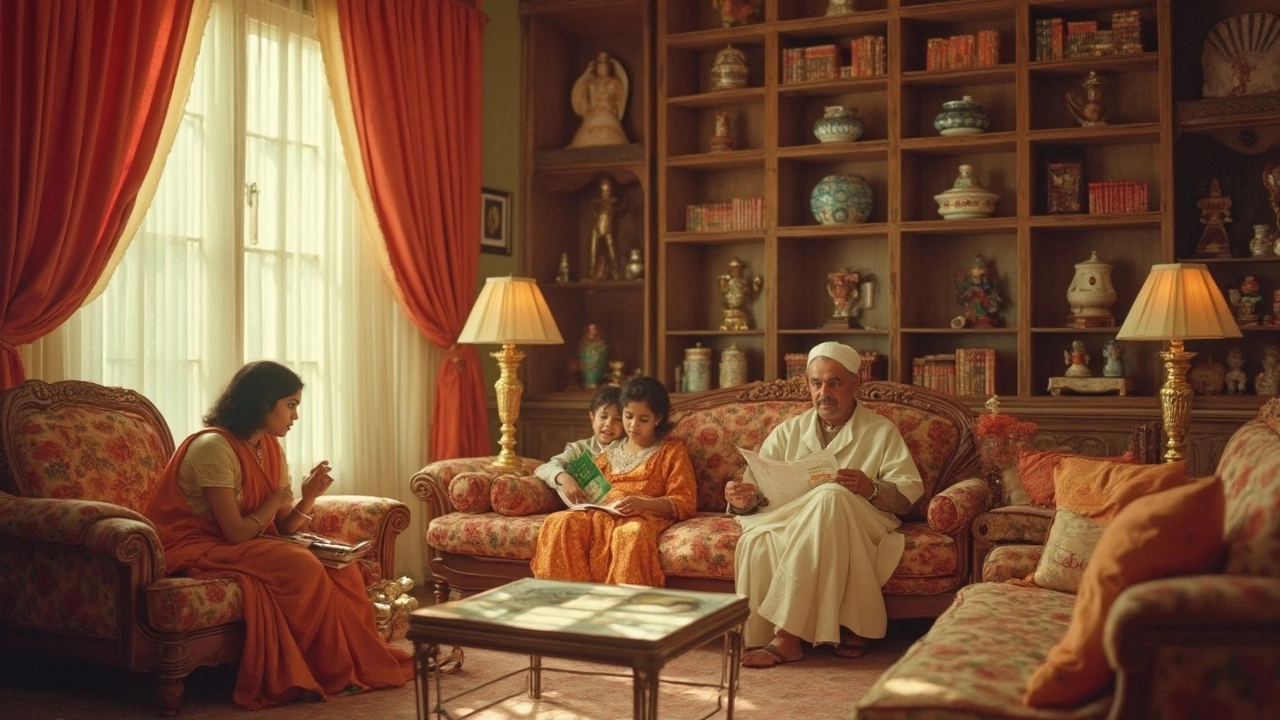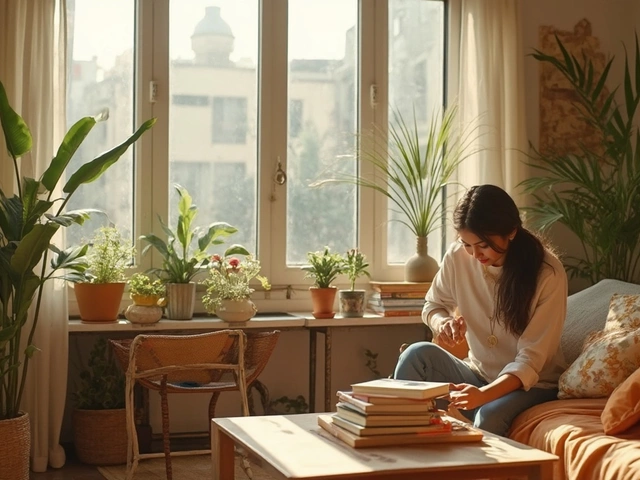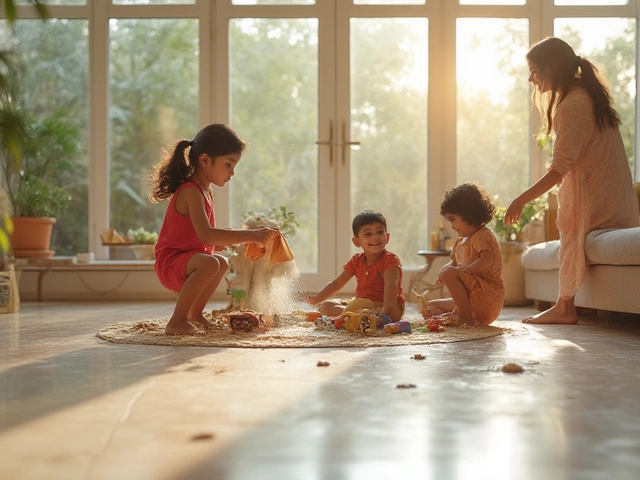If you ever flipped through a glossy catalog packed with flower-heavy wall art, frilly lamps, and tastefully arranged knick-knacks, there’s a good chance it was Home Interiors. This Texas-based company practically ruled the home decor party scene in the ‘80s and ‘90s, turning regular folks into interior stylists—sometimes without them leaving their living rooms. Back then, it wasn’t unusual for your aunt or neighbor to invite you over, serve finger foods, and introduce you to a world of ruffled curtains and decorative plaques.
But what actually happened to this company that used to be everywhere? Is there still a way to snag that signature “Home Interiors look,” or has it become a thing of the past? If you’re after the backstory, breakdown, and where to shop for a similar vibe today, you’re in the right place.
- How Home Interiors Started
- From Boom to Bankruptcy
- What Remains of Home Interiors Today
- Lessons for Today's Luxury Interiors Fans
How Home Interiors Started
Home Interiors wasn’t just some random idea that popped up overnight. It all began in 1957 when a woman named Mary Crowley kicked things off in Dallas, Texas. Back then, she saw a serious gap—regular people wanted nice-looking homes but didn’t want to pay crazy prices or shop in snooty designer stores. So, she came up with a simple plan: make home decor personal, affordable, and something you could buy from someone you trusted.
The key to her strategy was the party plan, which meant hosts would invite friends into their homes to check out products, snack, and shop—think Tupperware parties, but instead of food containers, guests scored brass candleholders and ornate wall art. It was a social experience that felt way less intimidating than a retail store. Direct sales were booming in the late 1900s and Home Interiors rode that wave hard. The company trained thousands of consultants—nearly all women—teaching them how to sell, decorate, and earn a decent income along the way.
By the mid-1980s, Home Interiors had exploded. It wasn’t just about home goods anymore; it was about confidence, friendships, and earning power, mostly for stay-at-home moms. The company became a giant, with billions in yearly sales, a massive warehouse in Dallas, and one of the largest fleets of multi-level marketing sellers in the country.
One quirky fact: Mary Crowley insisted that consultants memorize personal “affirmations” so they’d stay positive and motivated. She believed mindset mattered as much as business skills. Her vision turned Home Interiors from a small Texas operation into a nationwide juggernaut that would eventually redefine what counted as luxury interiors for millions of American homes.
From Boom to Bankruptcy
Home Interiors took off in the 1970s and 80s because it made home decor shopping feel personal and social. Instead of heading to a fancy store, you showed up at a friend’s living room party, checked out samples, and left with ideas for sprucing up your space. At its peak in the 1990s, Home Interiors pulled in more than $850 million a year in sales. That’s a massive number—especially for a company built on word of mouth and social get-togethers.
The company’s business model was simple: recruit regular folks as decorators (really, sales reps), train them to host fun gatherings, and sell a steady stream of vases, framed art, and candles. This was a classic direct sales play before social media made sharing cool finds super easy. In 1994, the company was so successful that its founder, Mary Crowley, had built one of the largest woman-run companies in America. It was a huge deal.
Things started to unravel as styles changed and competition got tougher. Big retailers like Target, Walmart, and later e-commerce giants, gave shoppers tons of new options for home decor. The home-party thing also started to feel dated. By 1998, Home Interiors was sold to an investment group led by Hicks, Muse, Tate & Furst. The new owners loaded it up with debt, hoping sales would continue to climb. They didn’t.
| Year | Major Event |
|---|---|
| 1994 | Company at peak, sales hit $850 million |
| 1998 | Purchased by investment group, debts increased |
| 2008 | Filed for Chapter 11 bankruptcy |
The pressure from debt, a tough economy, and changing trends was too much. In 2008, Home Interiors—which built its brand through parties and catalogs—filed for bankruptcy. Later that year, it got bought out by another direct sales company (Celebrating Home), but the original spirit faded. Still, for years, people kept coming back, hoping to find that Home Interiors look that made their homes feel cozy and personal.

What Remains of Home Interiors Today
After their big bankruptcy in 2008, a lot of people assumed Home Interiors disappeared for good. But here’s the wild part: parts of their old inventory and brand actually lived on, just not the way you might expect from a giant in the Home Interiors world. The biggest shift? In 2009, the company was bought up by its former rival, Celebrating Home, who merged the two brands for a few years. For a while, fans could still get their hands on old favorites, just with a new logo slapped on the box.
That merger didn’t last forever. Celebrating Home eventually phased out a lot of the recognizable Home Interiors products, shifting focus to more current trends and direct-sales strategies that weren’t so heavy on the ruffles and faux flowers. By 2017, the original Home Interiors catalog was pretty much a memory, and their classic party format had faded out completely.
But if you’re feeling nostalgic, there are still ways to track down pieces. Here’s what most collectors and decorators do today:
- Hit resale sites like eBay, Etsy, and Facebook Marketplace for vintage Home Interiors finds.
- Look for unofficial fans groups and swap communities on social media. People list their old treasures there regularly.
- Check out thrift stores, flea markets, and estate sales—it's not rare to stumble upon those cottage-core candle sconces or country-style wall art.
The old items are sometimes surprisingly valuable, especially limited-edition figurines or wall plaques. Some people collect whole sets, and pieces in their original boxes (with those unmistakable burgundy and gold labels) can sell for triple what they cost in the ‘90s.
| Year | Big Event | What Happened Next? |
|---|---|---|
| 2008 | Bankruptcy Filed | Operations halted, assets for sale |
| 2009 | Acquired by Celebrating Home | Began merging products and sales teams |
| 2017 | Brand Fades Out | Very little new production, nostalgia market rises |
Bottom line: You won’t find new Home Interiors catalogs in the mail, but the style left ripples. Some modern decor lines take big notes from that old-school cozy look, just updated for today. If you loved the vibe, don’t be afraid to mix a vintage piece with new luxury interiors for something personal—and far from dated.
Lessons for Today's Luxury Interiors Fans
The story of Home Interiors isn’t just trivia for decor nerds—it’s a heads-up for anyone splurging on fancy home stuff. Back in their heyday, Home Interiors dominated because they nailed the personal touch. Instead of just selling, they built a club. Fast-forward, people still crave that feeling, even if the way we shop has changed from living rooms to Instagram feeds and online stores.
If you’re into luxury interiors and want your space to feel as inviting as those catalog spreads, the big lesson is: don’t just buy stuff—curate your vibe. Find statement pieces with a bit of story behind them. Quality matters, but so does connection. Home Interiors shows that people remember how you made them feel, not just what you sold them.
- Mix old and new. Seriously, pairing vintage Home Interior finds with fresh, modern decor can give your room a one-of-a-kind look.
- Host your own mini-decor events. Invite friends over to swap ideas or even items. It’s part fun, part inspiration, totally personal.
- Start small with signature touches. You don’t need to redo every wall to get the luxury feel. Try switching up one room’s lighting or adding high-end throws and cushions—little changes can shift the whole vibe.
Here’s something wild: In its prime, Home Interiors pulled in more than $850 million in annual sales. Most of that came from people selling right out of their homes. The table below shows a quick look at their peak versus today’s top ways folks shop for luxury interiors:
| Era | Main Shopping Method | Annual Sales (est.) | Key Appeal |
|---|---|---|---|
| Home Interiors Peak (1980s-90s) | Home parties/direct sales | $850 million | Personal touch, community |
| Now | Online shops, social media | $300B+ (U.S. home decor market 2023)* | Convenience, endless variety |
*Source: Statista 2024 Report on U.S. Home Decor
So, what’s the bottom line? Take the good stuff Home Interiors nailed—community, connection, and a dash of fun—and blend it with all the options you have now. Your home should feel like you. Max, my dog, doesn’t care about trends, but even he knows a cozy room when he sees one. Chase that feeling, and you won’t go wrong.





